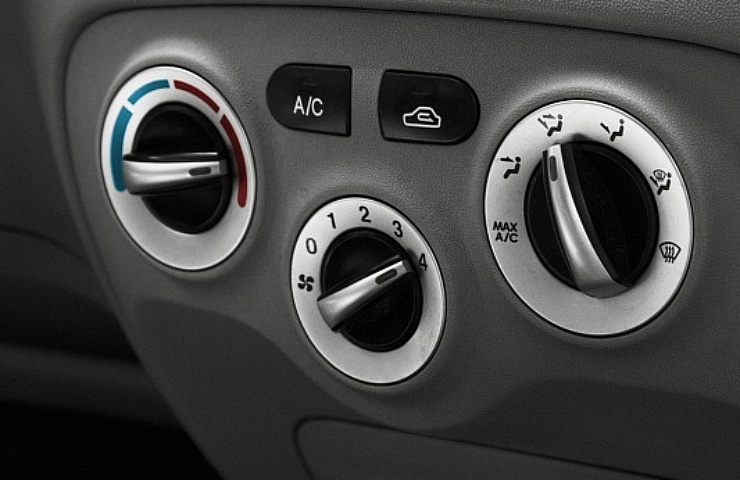Contents
Cold weather is here, so now is the time to ensure your car heater is up to the challenge.
When you fire up the temperature control and blast the air, it might take a few minutes before the cabin warms up. That’s because heat from the engine needs to build up for a few minutes. Then, the coolant will move through the hot engine, warm up, and circulate to the heater core, which radiates heat into the passenger compartment.
Sometimes, no matter how long your car runs, you still can’t get that nice warm toasty feeling. If that’s the case, answer these six questions.
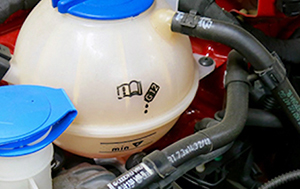
Make sure that your car’s coolant is at the right level.
Is There Enough Antifreeze and Water in the System?
Check the coolant level in your vehicle. If your ride is low on coolant, it will not fill the heater core sufficiently to blow warm air. Check the coolant overflow tank in your engine bay, making sure the coolant is above the minimum mark but doesn’t exceed the designated maximum safe level.
Read this: Before Winter Strikes, Make Sure Your Car Heater Is Ready
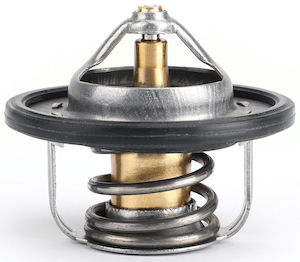
A malfunctioning engine thermostat can cause a car heater to run cold.
Is the Thermostat Working Correctly?
Suppose you’ve confirmed that there’s enough coolant. Then the culprit could be an engine thermostat stuck in the open position. A malfunctioning thermostat could prevent the coolant from sufficiently heating up.
Check by starting your car and then watching your engine’s temperature gauge. If, after 10 minutes, the engine is still cold, then there’s a decent chance that your engine needs a new thermostat.
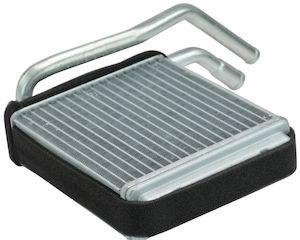
The difficulty of heater core replacement varies from vehicle to vehicle.
Does the Car Heater Core Have a Coolant Leak?
Look for moisture on the front carpets, especially by the passenger side. If you find any—and if your heater has a sweet or odd smell—the car heater core could have a leak. Bad heater cores call for replacement.
In some vehicles, the heater core is integrated with the AC system, so it’s easy to access under the hood. In most cases, however, it is tucked under the dashboard, making it difficult to access. So plan on contorting yourself to gain access and check for a leak.
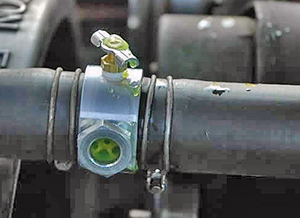
Use the bleeder valve to let out air trapped in the cooling system.
Are There Air Pockets in Your Cooling System?
When replacing the coolant in a vehicle, air can get trapped in the system, preventing the coolant from properly circulating. Here’s how to check.
Let the engine warm up long enough for the fan to come on. Locate the bleed screw on the radiator (or on the engine’s thermostat housing). Open the bleed screw a quarter-turn. If you hear a hissing sound, air is trapped in the system. Open the bleed screw a quarter-turn until coolant starts coming out and then close the bleed screw.
Many vehicles do not have bleed screws. In that case, park on a steep incline with the radiator above the heater core, or use a set of jack stands to raise the front of the vehicle. Then, with a cold engine, open the radiator cap and fill it with the proper mix of antifreeze and distilled water. Next, run the vehicle with the cap off and add coolant as needed.
When all the air has been purged, replace the cap, and you are good to go.

Heater valves are relatively inexpensive.
Are the Car Heater Controls and Actuators Working Correctly?
Depending on the vehicle, the controls for the HVAC (heater, ventilation, and air conditioning) system consist of metal cables, vacuum hoses, and switches or electrical actuators. With the temperature set to the hottest level, check to see if hot air is blowing. If not, the car’s heater core valve might not be fully open.
If the valve uses a metal cable or vacuum hose, ensure the cable and hose are not loose or broken and that the heater core is not blocked. Then, move the valve by hand, touching the coolant hoses that enter the firewall to ensure they are both hot. If one is cold, you should consider replacing the heater valve.
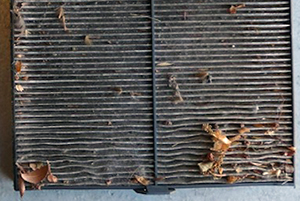
A clean cabin filter will make sure your car stays warm.
Is your HVAC Cabin Filter Clogged?
It’s best to replace cabin filters every 24,000 miles. They can clog with dirt and prevent adequate airflow through the car heater core. Make sure that your cabin filter is clean, with sufficient airflow. You can access most cabin filters through the glove box. Replacing the cabin filter is an easy chore.
Read this: Cabin Air Filter Replacement Made Easy

